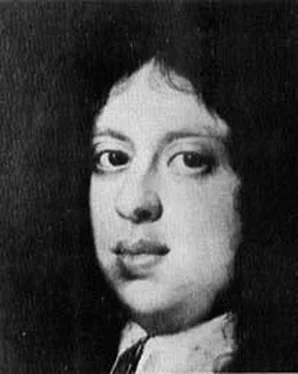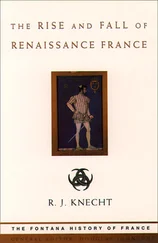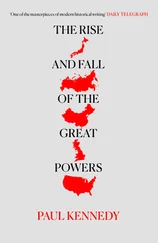Christopher - The Rise and Fall of the House of Medici
Здесь есть возможность читать онлайн «Christopher - The Rise and Fall of the House of Medici» весь текст электронной книги совершенно бесплатно (целиком полную версию без сокращений). В некоторых случаях можно слушать аудио, скачать через торрент в формате fb2 и присутствует краткое содержание. Жанр: История, на английском языке. Описание произведения, (предисловие) а так же отзывы посетителей доступны на портале библиотеки ЛибКат.
- Название:The Rise and Fall of the House of Medici
- Автор:
- Жанр:
- Год:неизвестен
- ISBN:нет данных
- Рейтинг книги:3 / 5. Голосов: 1
-
Избранное:Добавить в избранное
- Отзывы:
-
Ваша оценка:
- 60
- 1
- 2
- 3
- 4
- 5
The Rise and Fall of the House of Medici: краткое содержание, описание и аннотация
Предлагаем к чтению аннотацию, описание, краткое содержание или предисловие (зависит от того, что написал сам автор книги «The Rise and Fall of the House of Medici»). Если вы не нашли необходимую информацию о книге — напишите в комментариях, мы постараемся отыскать её.
picks up where Barbara Tuchman's Hibbert delves into the lives of the Medici family, whose legacy of increasing self-indulgence and sexual dalliance eventually led to its self-destruction. With twenty-four pages of black-and-white illustrations, this timeless saga is one of Quill's strongest-selling paperbacks.
The Rise and Fall of the House of Medici — читать онлайн бесплатно полную книгу (весь текст) целиком
Ниже представлен текст книги, разбитый по страницам. Система сохранения места последней прочитанной страницы, позволяет с удобством читать онлайн бесплатно книгу «The Rise and Fall of the House of Medici», без необходимости каждый раз заново искать на чём Вы остановились. Поставьте закладку, и сможете в любой момент перейти на страницу, на которой закончили чтение.
Интервал:
Закладка:
To the Florentine citizens, however, the Council proved a delightful spectacle. The sight of the bearded men from Constantinople walking through the streets in their astonishingly opulent clothes and their bizarre head-dresses, attended by Moorish and Mongol servants and accompanied by strange animals, was a never-ending source of interest as well as an inspiration to many a Florentine painter from Gentile da Fabriano to Benozzo Gozzoli.
Ultimately, after lengthy private discussions between Traversari and the patient and clever Johannes Bessarion, Archbishop of Nicaea, a compromise on the delicate subject of the Holy Ghost was reached; and this opened the way for agreement on other matters, including the partial authority of the Papacy over the Eastern Church. The crucial document setting forth the terms of the oecumenical compromise was solemnly signed on 5 July 1439; and the following day, during a ceremony in the Cathedral, this dramatic pronouncement was made: ‘Let the heavens rejoice and the earth exult, for the wall which divided the Western and Eastern Churches has fallen. Peace and concord have returned.’
The words were spoken by Cardinal Cesarini in Latin, and by Archbishop Bessarion in Greek. Then the Italian cardinal and the Greek archbishop embraced each other and, joined by all the other prelates and the Eastern Emperor, they knelt before the Pope. Afterwards their message to the Christian world, celebrating the triumph of reason, was inscribed on one of the great stone pillars which were to support the Cathedral dome.
But the concord thus joyfully celebrated was of brief duration. No sooner had the delegates returned home to Constantinople than the agreement reached in Florence was so strongly denounced that it had to be abandoned; and the Emperor was to find that the protestations of sympathy and promises of help against the Turk which he had received in Italy were to count for little. Fourteen years later the Sultan’s janissaries were to clamber over the smoking walls of Constantinople and the severed head of its last Emperor was to be displayed to the jeers of its conquerors at the top of a column of porphyry.
Yet for Florence, as Cosimo had foreseen, the Council had far happier consequences. As well as profiting the trade of the city, it was an important influence on what was already being spoken of as the Rinascimento . The presence of so many Greek scholars in Florence provided an incalculable stimulus to the quickening interest in classical texts and classical history, in classical art and philosophy, and particularly in the study of Plato, that great hero of the humanists, for so long overshadowed by his pupil, Aristotle. Bessarion, whose lodgings had been crowded night after night with Greek and Italian scholars, was prevailed upon to remain in Italy where he was created a cardinal and Archbishop of Siponto. Gemistos Plethon, the great authority on Plato, who had travelled from Constantinople with Bessarion, also agreed to remain in Florence for a time before going home to the in his own country.
Cosimo, who had listened to Plethon’s lectures on Plato with the closest attention, was inspired to found in Florence an academy for Platonic studies and to devote much more time to these studies himself. Plethon’s return home and Cosimo’s subsequent preoccupation with other matters had led to his plans being postponed for a time; but, some years later, when Cosimo adopted the son of one of his physicians, a young medical student named Marsilio Ficino, they were revived. Ficino’s enthusiasm for Plato prompted Cosimo to pay for his further education and afterwards to offer to instal him in the villa known as Montevecchio where, in the peace of the country, the young man was to study Greek and to translate all Plato into Latin. 1Ficino eagerly accepted the offer and, as he grew older and more learned, Cosimo would call him over from Montevecchio to the nearby villa of Careggi, and either alone or with other friends, such as the Greek scholar, John Argyropoulos, whom Cosimo persuaded to come to Florence in 1456, they would discuss philosophical questions far into the night. From these foundations grew the Platonic Academy which was to have so profound an influence upon the development of European thought.
As well as firing Cosimo with the ambition to found a Platonic Academy, the Council of Florence had also enabled him to make several marvellous additions to his library, which was beginning to be recognized as one of the most valuable in the world. For years past, his agents all over Europe and in the Near East had been buying on his instructions rare and important books and manuscripts whenever they became available, particularly in German monasteries where the monks were supposed to have little idea of their worth. In 1437 the death of Niccolò Niccoli, who was deeply in Cosimo’s debt, placed eight hundred more volumes in his hands. The religious books he gave to the monastery of San Marco; the others he kept for himself. Open to all his friends who cared to study there, it was the first library of its kind in Europe, and a generation later served as a model for the Vatican Library in Rome. Constantly increased by Cosimo and his heirs, it was eventually to contain no less than ten thousand codices of Latin and Greek authors, hundreds of priceless manuscripts from the time of Dante and Petrarch as well as others from Florence’s remoter past. 2
While spending immense sums on his library, Cosimo also followed his father’s example in lavishing money upon the adornment of Florence. Giovanni di Bicci had never much cared for books. Indeed, according to an inventory of his possessions made in 1418, he only owned three books altogether, a Latin life of St Margaret, a sermon by Fra Giovanni also in Latin, and a copy of the Gospels in Italian. But he had always recognized that the honour of the city, and the personal credit of the rich citizen who cared for honour, demanded donations to public building and to the enrichment of buildings already in existence.
The first important project with which Giovanni may have become involved was the provision of new doors for San Giovanni Battista. The Baptistery, ‘ il mio bel Giovanni ’ as Dante called it, was already at least two hundred and fifty years old. 3Its southern doors, depicting scenes from the life of the saint to whom the church was dedicated, were made by Andrea Pisano in 1330; and in 1402, a year of plague, it had been decided to provide new doors for the northern front as a votive offering, a plea to God not to repeat that dreadful visitation of 1348 when so many thousands of citizens had died in a fearful epidemic that had swept northwards across Europe from Naples. The doors were to be cast in bronze of the most exquisite workmanship, and seven of the leading artists of the day had each been asked to submit a design for a competition of which Giovanni di Bicci de’ Medici was probably one of the judges.
The design was to be for a bronze panel representing the sacrifice of Isaac; and, when all the works had been handed in, the judges decided to give special consideration to the submissions of three young artists, all of them in their twenties, Jacopo della Quercia from Siena, Lorenzo Ghiberti and Filippo Brunelleschi, both Florentines. After lengthy deliberations the choice fell upon Ghiberti and Brunelleschi; but when these two were asked to collaborate, the suggestion so annoyed the fiery-tempered Brunelleschi that he stormed out of Florence and went to study architecture in Rome, handing the bronze he had made to Cosimo de’ Medici who afterwards placed it in the old sacristy at San Lorenzo where it was displayed behind the altar.
Ghiberti, to whom the sole responsibility was now entrusted, was highly versatile, as a true Renaissance artist was required to be. Trained as a goldsmith, he was painter and architect as well as sculptor. He designed windows for the cathedral of Santa Maria del Fiore as well as golden tiaras for Martin V and Eugenius IV, the gold setting for a cornelian cameo depicting Apollo and Marsyas which belonged to Giovanni de’ Medici, and, for Cosimo, a reliquary for the bones of three now forgotten martyrs. At the time of his first commission for the Baptistery he was twenty-three; he was to be seventy-three before his work there was completed. A most exacting perfectionist, he cast and re-cast panel after panel before he was satisfied that the reliefs were as perfect as he could make them, exasperating his assistants by his exhausting, relentless, wearisome striving ‘to imitate nature to the utmost’. After twenty-two years’ work the doors were finished at last; and, in celebration of so important an event, the Priori came out in procession from the Palazzo della Signoria – an exodus permitted them only upon the most solemn occasions – to pay their respects to the artist and his great work. 4No sooner was the ceremony over, however, than Ghiberti returned to his foundry in the Via Bufalini opposite the hospital of Santa Maria Nuova, 5and immediately began to work on another set of doors for the eastern front of the Baptistery. He settled down to his task with that same determination to produce an unsurpassable masterpiece as he had brought to the earlier commission. After a further twenty-eight years’ work, a frail old man close to death, he was forced reluctantly to conclude that he could make no further improvement. The gilded bronze panels, representing scenes from stories in the Old Testament, were mounted at last, in 1456, in the eastern door of the Baptistery where Michelangelo was later to stand transfixed in wonderment before them and to declare that they were ‘fit to be the gates of Paradise’. 6
Читать дальшеИнтервал:
Закладка:
Похожие книги на «The Rise and Fall of the House of Medici»
Представляем Вашему вниманию похожие книги на «The Rise and Fall of the House of Medici» списком для выбора. Мы отобрали схожую по названию и смыслу литературу в надежде предоставить читателям больше вариантов отыскать новые, интересные, ещё непрочитанные произведения.
Обсуждение, отзывы о книге «The Rise and Fall of the House of Medici» и просто собственные мнения читателей. Оставьте ваши комментарии, напишите, что Вы думаете о произведении, его смысле или главных героях. Укажите что конкретно понравилось, а что нет, и почему Вы так считаете.












